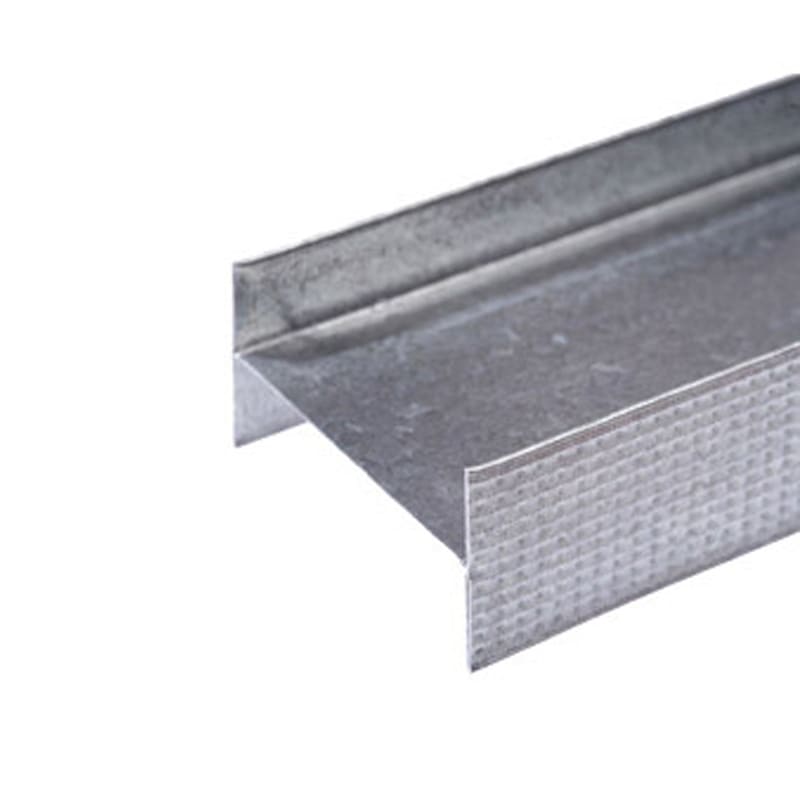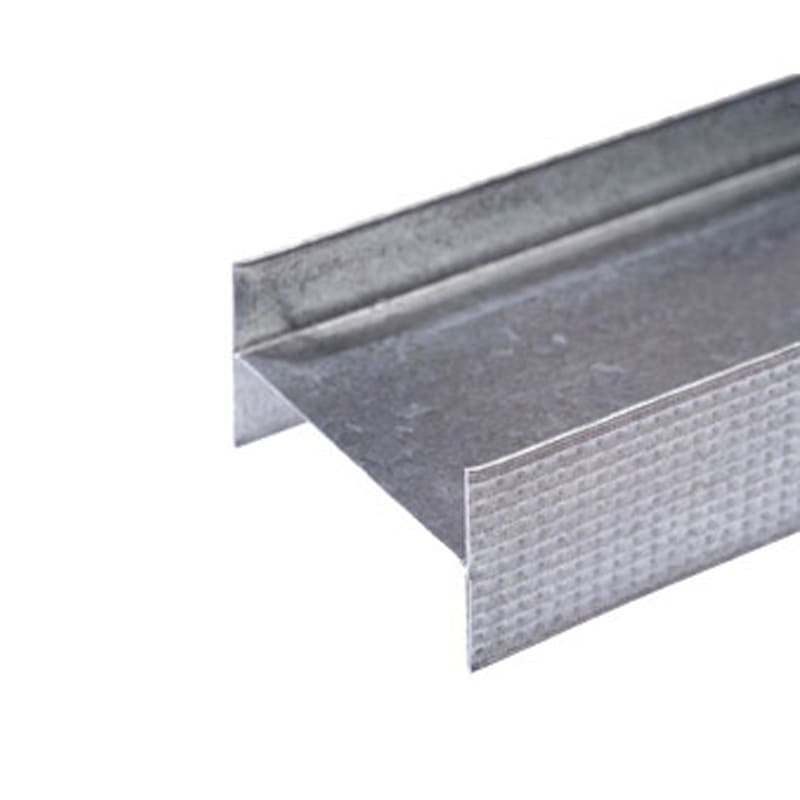Metal I Stud
(8 Products)Metal I Studs are an exceptionally strong stud wall solution. They are used to accommodate higher partitions without impacting partition width, allowing for increased height and providing ultimate impact resistance. They should be used in walls where board fixing strength is paramount. We provide a comprehensive range, including a variety of different lengths and widths to fulfil your project's needs.
What Are Metal I Studs?
Metal 'I' studs are the vertical components that give stability in non-load-bearing walls. The studs are considerably more durable than standard "C" shaped ones because of their "I" form, allowing for increased height (without increasing partition width) and improved impact resistance.
They're constructed of galvanised steel and are both lightweight and fully recyclable. Many lengths and widths are available on the market, as well as brands such as the Gypframe range which includes branded components such as GTEC U track and GTEC C Studs, which are then used in GypWall QUIET IWL and other GypWall systems.
Metal I Stud's Role In Metal Partitioning
The ‘I’ Stud is an I-shaped metal section purposed for use in conjunction with U Track to provide framework for partitions and wall linings. I studs are usually located in a floor or head track.
What Are the Main Components Of A Metal Stud Wall Frame?
Now that we're getting into the specifics of metal stud walls, you'll notice how distinct they are from timber frames. There are slight differences in a metal stud frame compared to a timber framing system, but they all operate on the same principles. The primary distinction between wood and metal studs is that metal studs require a few extra parts to complete the frame assembly.
The following are the central components of a metal stud wall:
- C Studs: This versatile metal section is the main metal stud in the wall and is friction fitted into the wall channel before being secured with screws.
- Channel Tracks: These play a similar structural role to floor plates seen in timber framing - channel tracks are purposed to fix vertical studs along the base of the wall.
- I Studs: The advantage of these studs is that they allow you to have a higher partition height while maintaining the exact same partitioning width.
- Resilient Bars: These bars optimise sound performance by de-coupling the plasterboard ceiling from its main structure, creating a "floating ceiling" that reduces the passage of airborne noise.
- U Studs: U Track is specifically purposed for installation in your floors or ceilings to create firm housing for C studs.
Frequently Asked Metal I Stud Questions
What Is The Difference Between A Metal Stud And Metal Track?
Studs and tracks are the two most important components in steel ceiling or wall framing. Without these two, the entire assembly would be impossible. The track serves as both the top and bottom plates of the structure; creating a channel in which C Studs can be fixed. The two marry up to ensure that the assembly can work correctly.
What Are The Benefits of Using Metal Over Timber?
Metal Studs have long been a popular cost-effective, economical solution for plasterboard partition walls (although they are suitable for use in a wide range of applications). The advantages of metal stud and track systems over timber are numerous. Here are just a few examples of its many benefits:
- Strength - Metal is not as prone to warping or decaying as timber, nor is it susceptible to mould growth. While metal does rust, protecting the metal stud wall with a vapour barrier will ensure greater longevity.
- Fire resistance - Metal is a fire-resistant material whilst wood is extremely flammable. Metal stud partition walls constructed alongside fire-resistant plasterboard will provide greater levels of fire protection than conventional timber.
- Durability - Metal's strength does not deteriorate with time, unlike timber, allowing a structure to upkeep an efficient, long-term structural integrity.
- Pest resistance - metal requires no treatment to ensure its protection from termites and other insects.
What Insulation Should I Use For Metal Studs?
Insulating a stud wall will aid in the reduction of sound transmission as well as the improvement of fire safety. It'll also improve thermal efficiency where necessary.
Your primary options when it comes to internal stud wall insulation are rolls, slabs, and boards.







